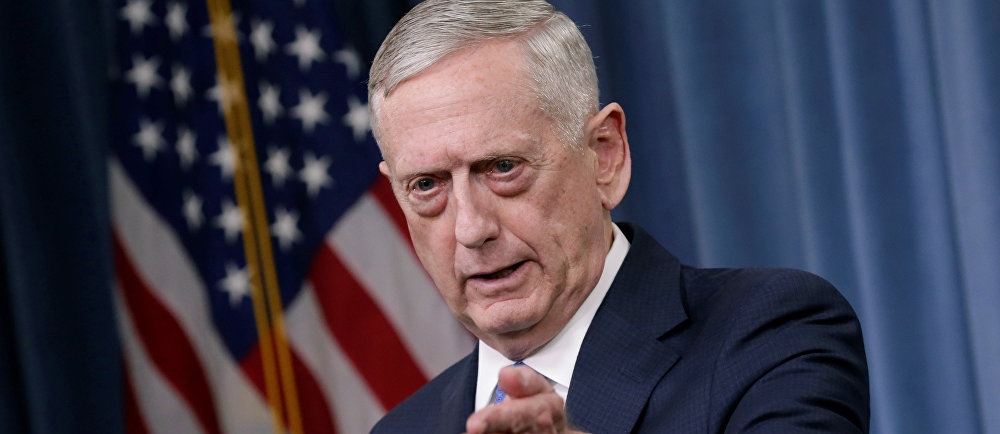CAATSA Waiver for Indo-Pacific
July 28, 2018 | Expert Insights

The United States has planned a waiver for India, Indonesia and Vietnam to avoid CAATSA’s secondary sanctions imposed on Russia’s defence sector.
Background
India has long maintained cordial relations with Russia since Independence through a non-aligned strategy. This neutral approach has been observed in contemporary times when India abstained from voting against Russia on the Crimean issue, while Russia supported India’s bid to join the Nuclear Supplier’s Group (NSG). Diplomatic ties are secondary to Russia’s pivotal role in India’s defence sector with the former providing 70% of Indian arms in the past 5 years.
India has recently signed a $5.5 billion deal with Russia to acquire 5 S-400 Surface to Air Missiles (SAM). The S-400 (NATO call name SA 21 “Growler”) is an impeccable piece of defence machinery with multifunction radars, anti-aircraft missile systems and launchers more efficient than the American Patriot system. Three types of missile deployment provide for layered defence.The Indian forces are operating at 3/4th of their potential making the deal imperative for defence against hostile neighbours.
Russia, like Iran and North Korea, are under heavy sanctions imposed by the Countering American Adversaries Through Sanctions Act (CAASTA) of USA. By extension, any country engaging in trade with Russian intelligence or defence sectors may have sanctions imposed on them. As such there is US coercion to drop the deal as it will deter access to advance US technology. Moreover, it puts India’s cooperation with US to the test.
Analysis
The US Senate, while reconciling the two versions of the 2019 National Defence Authorisation Act (NDAA), decided to provide “flexibility for strategic partners and allies to move away from the use of Russian military equipment to American equipment, while ensuring that US defense and security interests remain protected, through a modified waiver” under CAATSA. Analysts in Delhi and Washington believe India has met the conditions.
A number of top US lawmakers and US Defense Secretary Jim Mattis were seeking to fix the CAATSA, arguing that the law "imperils America's alliances and access to defense markets in the Indo-Pacific region.”
The recent $5.5 billion deal for S400 missile defence systems and CAATSA sanctions will be crucial points of debate between US and India at the upcoming 2+2 High Level meeting scheduled for early September.
US has tried unsuccessfully for years to persuade India to sign three foundational agreements intended to facilitate interoperability between their respective militaries and to further enhance defense ties. The primary concern with the Logistics Exchange Memorandum of Agreement (LEMOA), Communications Compatibility and Security Agreement (COMCASA), and the Basic Exchange and Cooperation Agreement for Geospatial Intelligence (BECA) agreements is that it might pave the way for US to set up bases in India and imperil India’s long-held foreign policy of strategic autonomy. Insofar, Russia has respected India’s autonomy while exporting large amounts of arms.
Defence Minister Nirmala Seetaram expressed India’s need for a liberal approach to sharing Russian technology as there are considerable delays in acquiring replacements for critical Russian made infrastructure. Although India is hopeful for progress with Russia, the latter's sluggish economy and military tactics in West Asia could put a dent in this trajectory.
The Trump Administration’s “Free and Open Indo-Pacific Strategy”, and the “non-bloc architecture of security in the Asia-Pacific Region” of the ‘Quad’ with Australia, Japan, US and India could further disrupt the bi-lateral alliance. India has diversified arms imports by signing a number of contracts with NATO countries, including French Dassault Rafael fight jets which are considerably more expensive and less competent than the Russian made Sukhoi, the most capable 4th generation fighter jet, and MiG. Ukraine has also signed contracts for tanks, aircrafts and submarines, much to the chagrin of Russia.
It is imperative to note that India’s deteriorating military prowess can also be attributed to a weak indigenous defence sector and lack of comprehensive national security strategy. Former president APJ Abdul Kalam felt that India has to domestically manufacture arms and defence equipment to reduce reliance on external actors and rising costs of arms purchase. The lack of coordination between defence forces and production stymies development of a domestic manufacturing sector. Moreover, India has to reap the “youth dividend” by developing a military industrial complex (MIC) which can, at the least, compete with China as the neighbourhood remains hostile.
Counterpoint
Rakesh Krishnan Simha, foreign affairs analyst and military observer, maintains the notion that CAATSA is an “an illegal attempt to slow down Russian arms exports because according to the World Trade Organization (WTO) no country can pass laws to restrict free global trade.” US is attempting to create a monopoly situation by using a law to restrict Russian arms manufacturers from the arms market.
Assessment
Our assessment is that geopolitical events may have persuaded Washington to be mindful of India’s strategic requirement exempt it from CAATSA in specific deals with Russia. We believe that such an accommodation might hinder the interests of the respective militaries to ensure interoperability and further permit transfer of technology. We feel that the US will again stress on the importance of sanctions and press for more discussions.








Comments